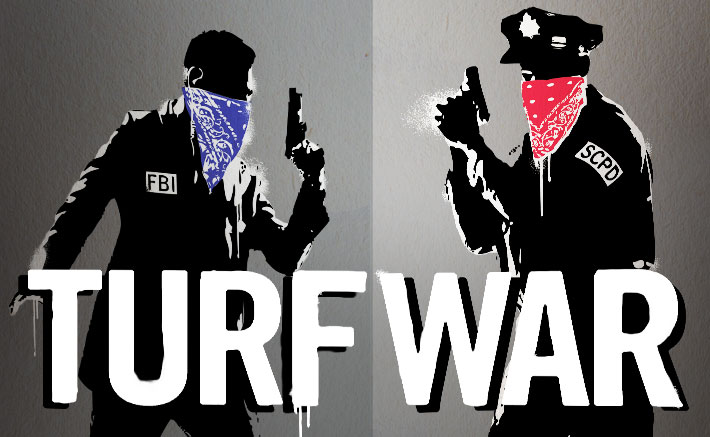Part 2 of our special series, Gangs of Long Island
In early 2006, Melvin Daniels was a 20-year-old cocaine dealer for the Prospect Piru set of the Bloods in Westbury. The young man known as “Maniac” had seven years on the streets at that time, when an undercover narcotics detective with Nassau County police picked him up. After surviving what he describes as the “kill-or-be-killed” gang life, he began a three-and-a-half-year stay behind bars. He awaited trial in the relative comfort of Nassau County Jail surrounded by people from the community, then was convicted and sentenced to hard time in a medium-security upstate prison. Later, he was transferred to the maximum-security Elmira Correctional Facility after he slashed another inmate, a member of a rival gang, in the face and chest.
Once there, he traded up to the Hit Squad Brim set of the Bloods, a larger organization. But with tighter restrictions than before, and because his then-fellow inmates included cold-blooded killers with nothing to lose due to their much-longer sentences, he laid low and spent his time reading until his release earlier this year.
Out three months now, the barrel-chested 23-year-old took the microphone during the recent fifth-annual Roosevelt Community Awareness Day at Centennial Park and denounced the lifestyle that landed him a trip up the river.
“It’s not a fun life, it’s really not,” said Daniels, now an anti-gang advocate with Help End Violence Now (HEVN), as a group of teenagers played in a basketball tournament before him. “You see who’s really there for you, who keeps in contact,” he said. Among the first things he did when he got out was tattoo his daughter’s name, Madison, on his arm.
But Maniac was simply living up to the gang’s expectation—that its members wind up dead, hospitalized or imprisoned. As he begins to pull his life back together, Daniels leaves behind a system that presently has ensnared more than 400 gang members—the number currently in the two county jails on Long Island, about 8 percent of the estimated more than 5,000 total gangsters on LI—and an untold number of local gang bangers who have been sentenced to the New York State prison system.
In recent tours of the Nassau County Jail in East Meadow and Suffolk County Jail in Riverhead, the Press got an up-close look at how gangs operate from inside.
Strength in Numbers
When a suspected gang member is arrested, they meet one of five specialized investigators in a holding pen at county jail where they’re questioned, photographed and, depending on their answers, entered into a gang database.

Men on a Mission: Melvin Daniels (L.) and Bishop J. Raymond Mackey outside Centennial Park in Roosevelt where they spread their message of peace on the streets through the nonprofit group Help End Violence Now (HEVN).
Whether or not they’re awaiting trial or doing a “county bullet” (i.e., one year or less, the standard jail-term for misdemeanors—as opposed to felonies that earn longer sentences in an upstate prison), anyone who authorities believe might run with a gang gets investigated.
Suffolk County Jail officials said there were 238 gang members among the approximately 1,700 inmates as of Sept. 3. About half are 18 or younger and 30 to 40 percent are Bloods, although those estimates are constantly in flux. Nassau has 170 gang members identified in an inmate population of 1,653 as of Sept. 15—but in both jails there are exceptions.
“We have a lot more here than that, but we have to follow certain criteria,” says Sgt. Steven Lundquist, commanding officer of the Gang Intelligence Unit, from inside his pale-green office adorned with confiscated gang paraphernalia. “We can’t just recklessly label people gang members because it will affect their cases,” and may add time on to their sentence, he says.
Knowing this, many suspected gang members lie to investigators about their affiliations and are less likely to have overt gang tattoos. A tactic used to avoid detection is to hide gang tats behind their ears, on the bottom of their feet, between their fingers, under their hair or inside their mouth. Gang-related burn marks and graffiti inside jail cells have also been curbed for those gang bangers trying to stay off the radar.
The best ways for jailhouse investigators to identify a gang member include self-admission, being fingered by a confidential informant, possessing a gang-rule list, or getting arrested with gang members, which at least makes them a suspected gang associate. Investigators can’t peg the color of their clothing as a guarantee of gang membership—perhaps they just really like blue, the color identified with the Crips.
And in the case of a confidential informant, investigators have to be especially careful. “The worst thing you can be here is a snitch, so we have to protect people’s identities,” Lundquist says.
Once gang members are identified, they are spread out in separate housing areas and mixed in with rivals to avoid any one particular gang linking up and taking over a section. But no matter what cell block an inmate calls their new home, incarceration is often a transformative experience—for better or for worse.






